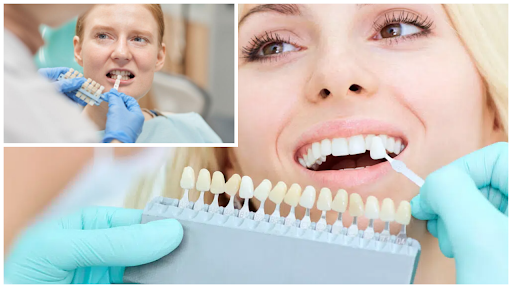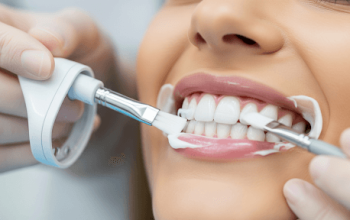Dental crowns are a standard solution for restoring damaged teeth, improving aesthetics, and maintaining dental health. Understanding the various types and costs is essential when considering dental crowns, especially if you seek affordable dental crowns. This article will explore the different types of dental crowns and their benefits and help you determine the most affordable option.
Types of Dental Crowns
1. Metal Crowns
Metal crowns are made from alloys that include gold, platinum, or base metals like nickel and chromium. They are known for their durability and strength, making them ideal for molars that endure significant chewing force. Metal crowns rarely chip or break and require less tooth structure removal. However, their metallic colour makes them less appealing for visible teeth. Depending on the metal used, metal crowns can be relatively affordable. Base metal alloys are cheaper than gold or platinum alloys.
2. Porcelain-Fused-to-Metal (PFM) Crowns
PFM crowns combine the strength of metal with the aesthetic appeal of porcelain. They have a metal base covered by a porcelain layer that matches the natural tooth colour. PFM crowns are durable and can be used for front and back teeth.
However, the porcelain can chip or break, and the metal underlayer may sometimes show through as a dark line, especially at the gum line. Due to the combination of materials, PFM crowns are generally more affordable than all-porcelain crowns but can be more expensive than metal crowns.
3. All-Ceramic or All-Porcelain Crowns
All-ceramic or all-porcelain crowns offer the best natural colour match and are often recommended for front teeth. They are metal-free, making them suitable for people with metal allergies. While aesthetically pleasing, they may not be as durable as metal or PFM crowns and are more prone to chipping or breaking under heavy biting forces. Due to their aesthetic advantages and material costs, all ceramic or all-porcelain crowns tend to be more expensive.
4. Zirconia Crowns
Zirconia crowns are made from a solid type of ceramic known as zirconium dioxide. They offer excellent durability and aesthetics, providing a natural appearance similar to all-porcelain crowns while being as strong as metal crowns. Zirconia crowns are also biocompatible, reducing the risk of allergic reactions. Zirconia crowns are typically more expensive than PFM and metal crowns but can vary based on the type of zirconia used.
5. Gold Crowns
Gold crowns are made from gold, copper, and other metals, offering durability and biocompatibility. They are known for their longevity and the ability to withstand heavy biting forces without chipping or breaking. Gold crowns also require less tooth structure removal.
However, their metallic colour is a significant drawback for visible teeth. Gold crowns can be quite expensive due to the cost of gold, but they are considered a long-term investment due to their durability and longevity.
Choosing the Most Affordable Option
Regarding affordability, gold crowns are not the least expensive option. However, their durability and longevity can make them a cost-effective choice in the long run. Metal crowns, particularly those made from base metals, offer a good balance of durability and cost-effectiveness, especially for molars.
PFM crowns provide a middle ground in aesthetics and cost, making them a popular choice for many patients. While offering superior aesthetics and biocompatibility, all ceramic and zirconia crowns are the most expensive options. They are ideal for patients who prioritise appearance, particularly for front teeth, and who are willing to invest in long-term durability.
Factors Influencing Cost
Several factors influence the cost of dental crowns beyond the material:
Geographic Location: Dental costs vary significantly depending on the location. Urban areas with higher living costs tend to have higher rental fees.
Dentist’s Expertise: Experienced and specialized dentists may charge more.
Laboratory Fees: The quality and reputation of the dental laboratory fabricating the crown can impact the cost.
Insurance Coverage: Dental insurance may cover a portion of the cost, especially if the crown is medically necessary rather than purely cosmetic.
Conclusion
Choosing the right dental crown involves balancing aesthetics, durability, and cost. Resin and base metal crowns are the most budget-friendly options for those seeking affordable dental crowns. However, it’s essential to consider the long-term costs associated with durability and replacement.
Consulting with your dentist can help you make an informed decision based on your needs and financial situation. By understanding the different types of dental crowns and their costs, you can select the best option to restore your smile effectively and affordably.



